Delve into the beauty and diversity of 20 flowers that start with E. Explore their unique qualities and gardening insights to create a captivating outdoor space.
Welcome to our exciting journey through the world of flowers that start with E! Whether you’re a seasoned gardener or just beginning to explore the joys of plant life, these blooms will add charm and variety to your garden. Let’s discover 20 different flowers, their special features, and how you can grow them. Get ready to explore the enchanting world of ‘E’ flowers!
1. Echinacea
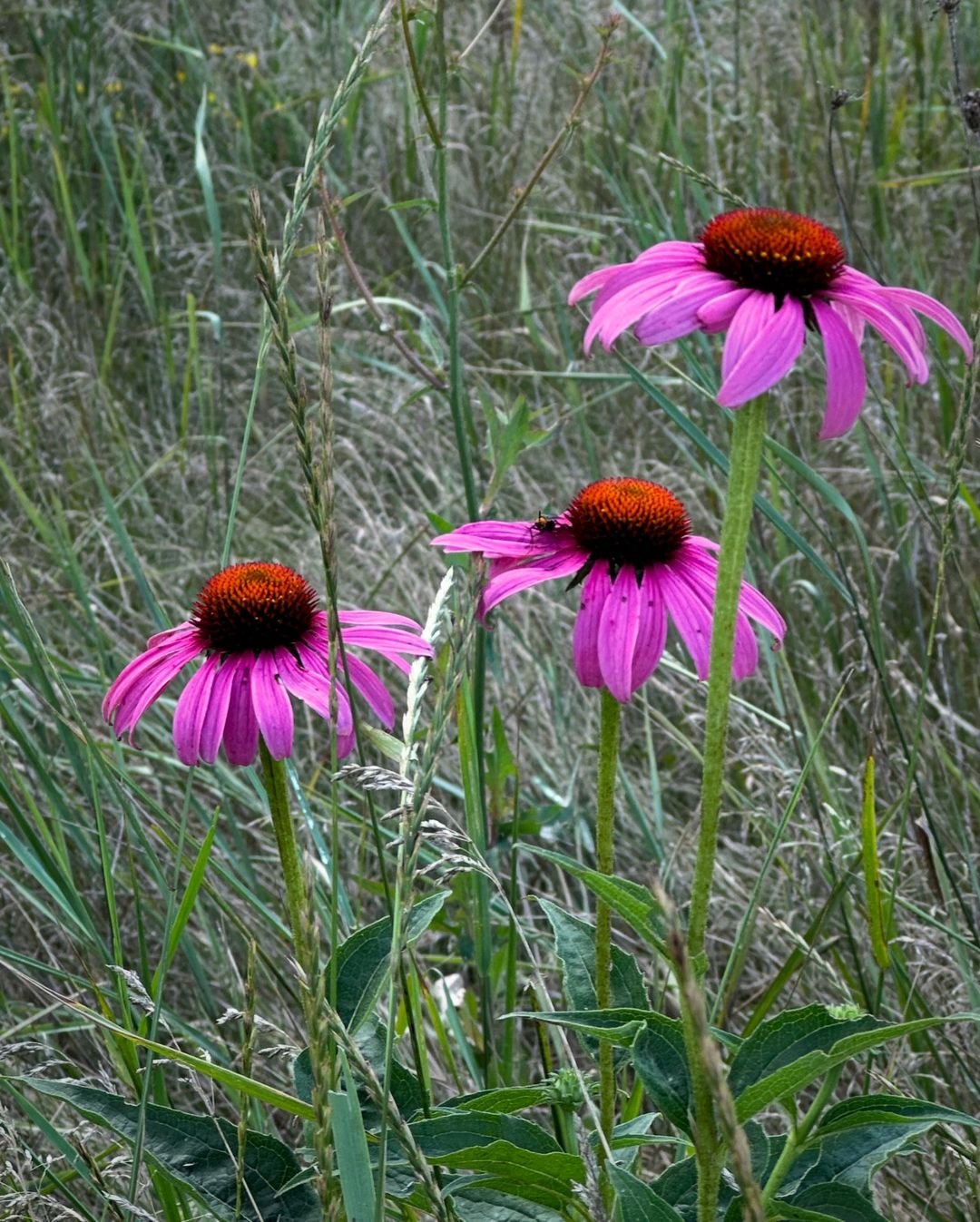
Here’s a chart with information about Echinacea (Coneflower):
| Aspect | Details |
|---|---|
| Botanical Name | Echinacea spp. |
| Common Name | Coneflower |
| Plant Type | Herbaceous perennial |
| Hardiness Zone | Zones 3-9 |
| Sun Exposure | Full sun |
| Soil Type | Well-drained, sandy or loamy soil |
| Watering Needs | Low to moderate |
| Growth Habit | Upright, clump-forming |
| Height/Spread | 2-4 feet tall, 1-2 feet wide |
| Special Features | Attracts pollinators, drought-tolerant, used in herbal medicine, long blooming season |
Echinacea, also known as coneflower, has daisy-like blooms with raised centers. They come in purple, pink, white and yellow. These tough flowers bloom for a long time.
How to grow:
- Plant in full sun
- Use well-draining soil
- Water deeply but infrequently once established
Echinacea attracts butterflies and birds. It’s also used in herbal medicine. Learn more from North Carolina State Extension.
2. English Daisy

Here’s a chart with information about English Daisy:
| Aspect | Details |
|---|---|
| Botanical Name | Bellis perennis |
| Common Name | English Daisy |
| Plant Type | Herbaceous perennial |
| Hardiness Zone | Zones 4-8 |
| Sun Exposure | Full sun to partial shade |
| Soil Type | Well-drained, moist soil |
| Watering Needs | Moderate |
| Growth Habit | Low-growing, rosette-forming |
| Height/Spread | 6-12 inches tall, 6-12 inches wide |
| Special Features | Attractive flowers with white, pink, or red petals and yellow centers; often used in lawns and garden borders |
English Daisies have small, round flowers with white petals and yellow centers. They’re low-growing and bloom in spring and early summer.
How to grow:
- Plant in full sun or partial shade
- Keep soil moist but not soggy
- Deadhead to encourage more blooms
English Daisies are great for edging paths or in rock gardens. They’re often used in lawn alternatives.
3. Edelweiss
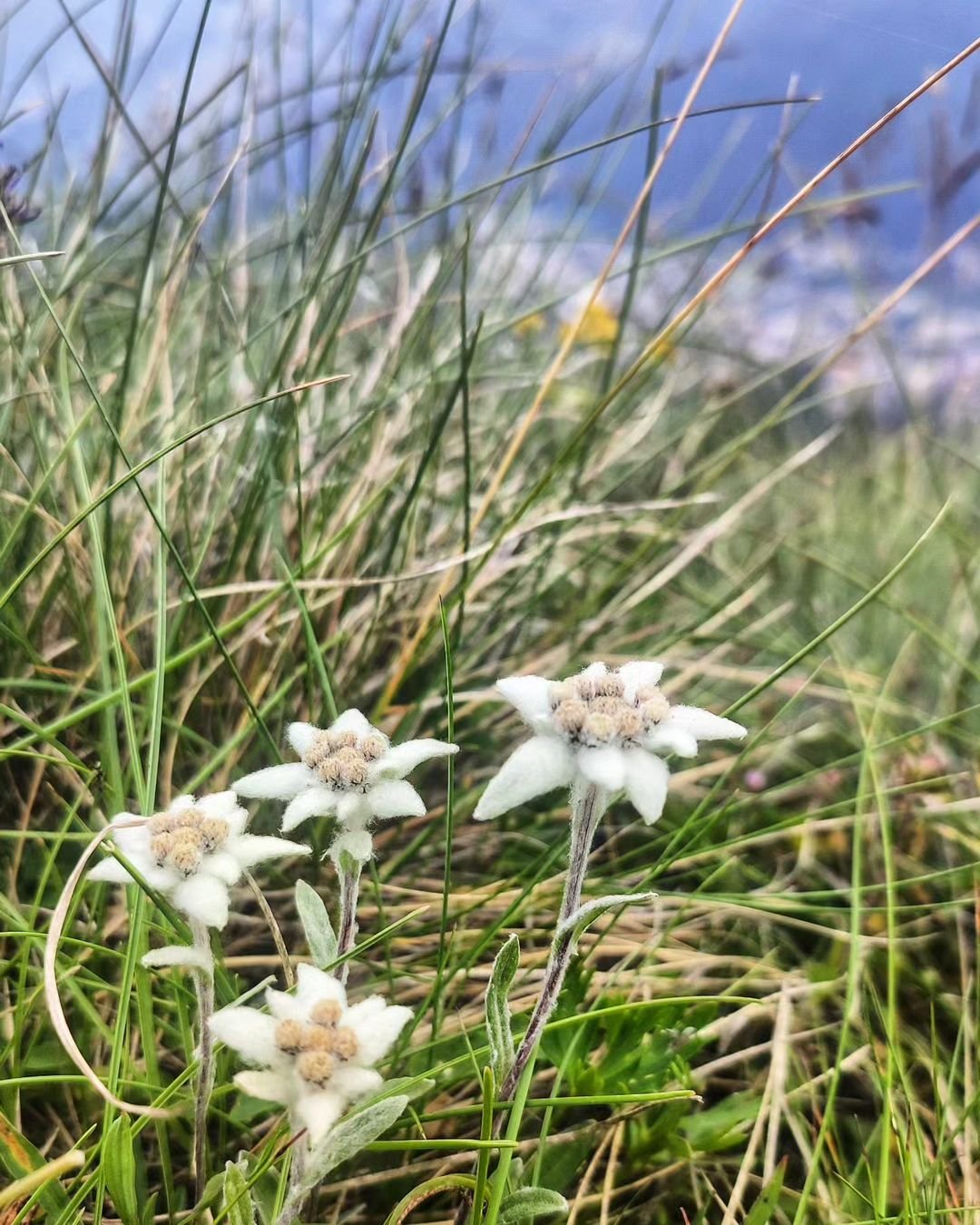
Here’s a chart with information about the Edelweiss flower:
| Aspect | Details |
|---|---|
| Botanical Name | Leontopodium alpinum |
| Common Name | Edelweiss |
| Plant Type | Perennial |
| Hardiness Zone | Zones 4-7 |
| Sun Exposure | Full sun |
| Soil Type | Well-drained, gritty, alkaline soil |
| Watering Needs | Low to moderate |
| Growth Habit | Clumping, mat-forming |
| Height/Spread | 6-12 inches tall, 6-12 inches wide |
| Special Features | Iconic star-shaped, woolly white flowers; traditionally associated with alpine regions and high altitudes, symbol of purity and rugged beauty |
Edelweiss is a small, white star-shaped flower famous in Alpine regions. It’s known for growing in tough mountain conditions.
How to grow:
- Plant in full sun
- Use well-draining, rocky soil
- Don’t overwater – they’re used to dry conditions
Edelweiss is protected in many areas due to over-collection. It’s best to enjoy these flowers in their natural habitat or grow them from seeds.
4. Evening Primrose
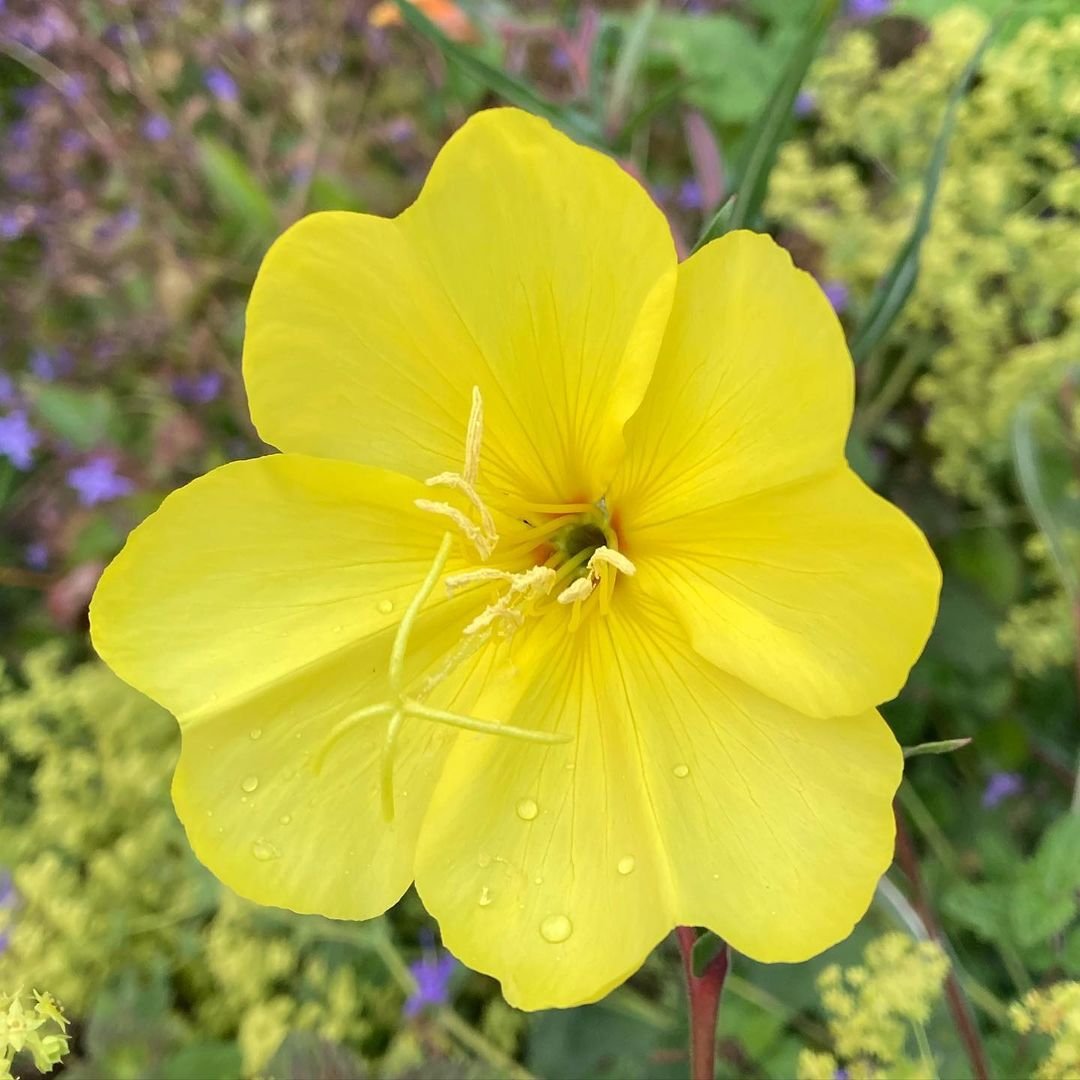
Here’s a chart with information about the Evening Primrose flower:
| Aspect | Details |
|---|---|
| Botanical Name | Oenothera spp. |
| Common Name | Evening Primrose |
| Plant Type | Biennial or perennial |
| Hardiness Zone | Zones 3-11 (varies by species) |
| Sun Exposure | Full sun |
| Soil Type | Well-drained, sandy or loamy soil |
| Watering Needs | Low to moderate |
| Growth Habit | Upright, clumping |
| Height/Spread | 1-5 feet tall, 1-2 feet wide |
| Special Features | Fragrant flowers that open in the evening, attract pollinators, used in traditional medicine, yellow, white, pink, or red flowers depending on the species |
Evening Primrose has yellow, cup-shaped flowers that open in the evening. They have a sweet scent that attracts night-flying moths.
How to grow:
- Plant in full sun
- Use well-draining soil
- Water regularly until established
Evening Primrose is not just pretty. Its oil is used in health supplements. Learn more from Missouri Botanical Garden.
5. Euphorbia

Here’s a chart with information about the Euphorbia flower:
| Aspect | Details |
|---|---|
| Botanical Name | Euphorbia spp. |
| Common Name | Spurge |
| Plant Type | Perennial, annual, or succulent |
| Hardiness Zone | Zones 4-11 (varies by species) |
| Sun Exposure | Full sun to partial shade |
| Soil Type | Well-drained soil |
| Watering Needs | Low to moderate |
| Growth Habit | Upright, spreading, or mounding |
| Height/Spread | 6 inches to 3 feet tall, similar spread |
| Special Features | Diverse forms and colors, drought-tolerant, some species have toxic sap, used in xeriscaping and ornamental gardening |
Euphorbia is a large family of plants with many different forms. Some have colorful bracts (modified leaves) that look like flowers.
How to grow:
- Plant in full sun or partial shade
- Use well-draining soil
- Be careful of the sap, which can irritate skin
Some Euphorbias, like Poinsettias, are popular holiday plants. Others are grown for their unique shapes and colors.
6. Eustoma
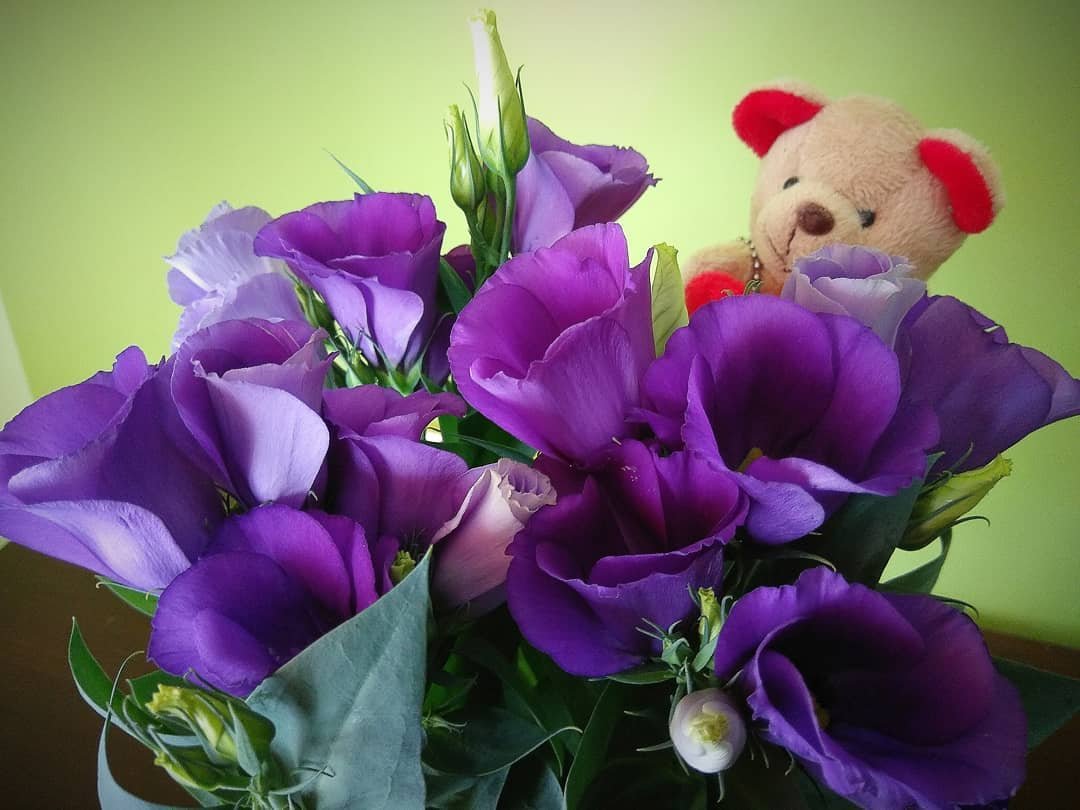
Here’s a chart with information about the Eustoma (Lisianthus) flower:
| Aspect | Details |
|---|---|
| Botanical Name | Eustoma grandiflorum |
| Common Name | Lisianthus |
| Plant Type | Annual or biennial |
| Hardiness Zone | Zones 8-10 (perennial), grown as annual in cooler zones |
| Sun Exposure | Full sun to partial shade |
| Soil Type | Well-drained, rich soil |
| Watering Needs | Moderate |
| Growth Habit | Upright |
| Height/Spread | 1-3 feet tall, 6-12 inches wide |
| Special Features | Rose-like flowers in various colors, long-lasting as cut flowers, attracts pollinators |
Eustoma, also called Lisianthus, has rose-like flowers on tall stems. They come in shades of purple, pink, white and blue.
How to grow:
- Plant in full sun
- Use rich, well-draining soil
- Water at the base to avoid wetting leaves
Eustoma makes excellent cut flowers. They’re often used in wedding bouquets because of their elegant look.
7. Erica
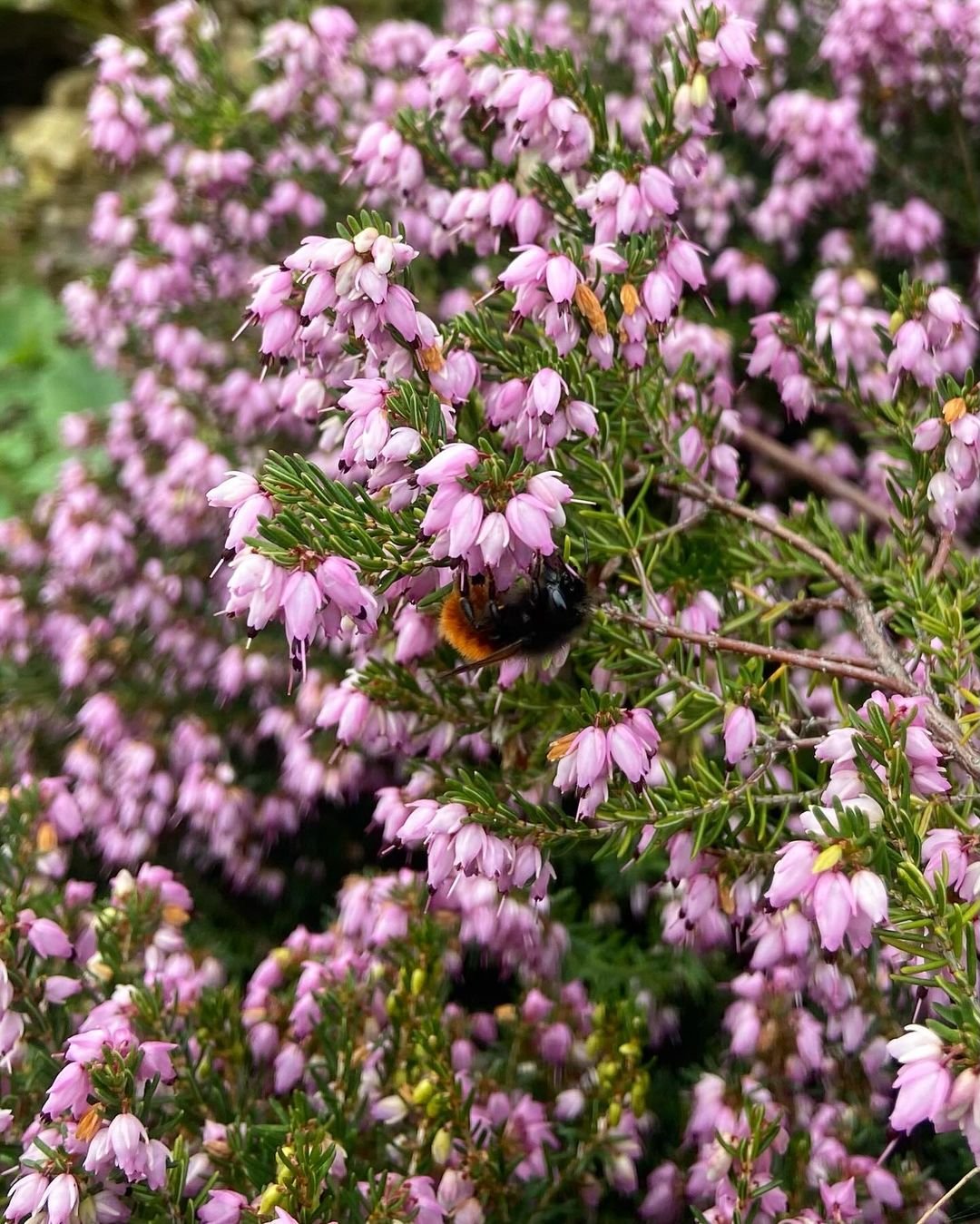
Here’s a chart with information about the Erica (Heath) flower:
| Aspect | Details |
|---|---|
| Botanical Name | Erica spp. |
| Common Name | Heath |
| Plant Type | Evergreen shrub |
| Hardiness Zone | Zones 5-8 (varies by species) |
| Sun Exposure | Full sun |
| Soil Type | Well-drained, acidic soil |
| Watering Needs | Low to moderate |
| Growth Habit | Low-growing, spreading |
| Height/Spread | 1-2 feet tall, 1-3 feet wide |
| Special Features | Small, bell-shaped flowers in various colors (pink, white, purple), blooms in late winter to early spring, attracts pollinators, drought-tolerant once established |
Erica, or Heath, is a low-growing shrub with small, bell-shaped flowers. They bloom in winter and early spring when not much else is flowering.
How to grow:
- Plant in full sun
- Use acidic, well-draining soil
- Don’t overwater – they prefer dry conditions
Erica is great for winter color in gardens. It’s also good for rock gardens and as ground cover.
8. Echium

Here’s a chart with information about the Echium flower:
| Aspect | Details |
|---|---|
| Botanical Name | Echium spp. |
| Common Name | Echium, Viper’s Bugloss |
| Plant Type | Biennial or perennial |
| Hardiness Zone | Zones 3-10 (varies by species) |
| Sun Exposure | Full sun |
| Soil Type | Well-drained, sandy or rocky soil |
| Watering Needs | Low to moderate |
| Growth Habit | Upright, bushy |
| Height/Spread | 1-10 feet tall, 1-3 feet wide |
| Special Features | Showy spikes of blue, pink, or purple flowers, attracts pollinators (especially bees), drought-tolerant, some species have coarse or spiny leaves |
Echium has tall spikes of small, funnel-shaped flowers. Some types can grow very tall, up to 15 feet!
How to grow:
- Plant in full sun
- Use well-draining soil
- Protect from strong winds
Echium is great for adding height to gardens. It attracts bees and butterflies. Learn more from University of California Agriculture and Natural Resources.
9. Eryngium
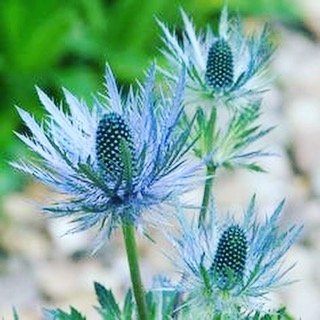
Here’s a chart with information about the Eryngium (Sea Holly) flower:
| Aspect | Details |
|---|---|
| Botanical Name | Eryngium spp. |
| Common Name | Sea Holly |
| Plant Type | Perennial |
| Hardiness Zone | Zones 3-9 |
| Sun Exposure | Full sun to partial shade |
| Soil Type | Well-drained, sandy or loamy soil |
| Watering Needs | Low to moderate |
| Growth Habit | Upright, clumping |
| Height/Spread | 1-4 feet tall, 1-2 feet wide |
| Special Features | Spiky, metallic blue or silver bracts surrounding cone-shaped flowerheads; blooms in summer; drought-tolerant; attracts bees and butterflies; used in dried flower arrangements |
Eryngium or Sea Holly, has spiky blue flowers and stems. It looks a bit like a thistle but is actually related to carrots.
How to grow:
- Plant in full sun
- Use well-draining soil
- Don’t overwater – they’re drought-tolerant
Sea Holly is great for adding texture to gardens. It’s also good for dried flower arrangements.
10. Erigeron
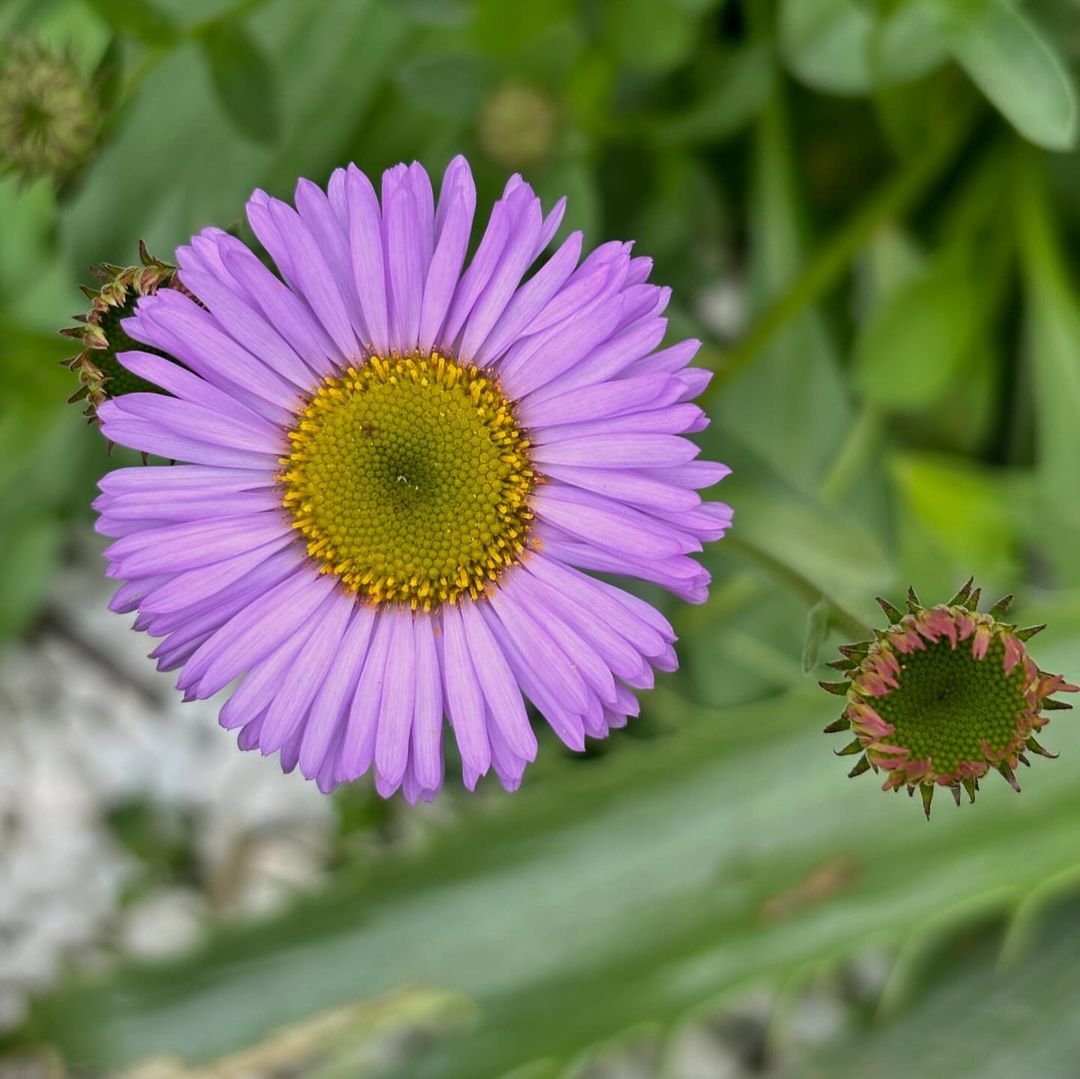
Here’s a chart with information about the Erigeron flower:
| Aspect | Details |
|---|---|
| Botanical Name | Erigeron spp. |
| Common Name | Fleabane |
| Plant Type | Perennial or annual |
| Hardiness Zone | Zones 3-9 |
| Sun Exposure | Full sun to part shade |
| Soil Type | Well-drained |
| Watering Needs | Low to moderate |
| Growth Habit | Upright, spreading |
| Height/Spread | 6 inches to 3 feet tall, 6 inches to 2 feet wide |
| Special Features | Daisy-like flowers in shades of white, pink, purple, or blue; blooms profusely from spring to fall; attracts butterflies and bees; drought-tolerant; suitable for borders, rock gardens, and containers |
Erigeron, also called Fleabane, has small, daisy-like flowers in white, pink or lavender. They bloom for a long time in summer.
How to grow:
- Plant in full sun or partial shade
- Use well-draining soil
- Deadhead to encourage more blooms
Erigeron is great for cottage gardens or wildflower meadows. It’s easy to grow and attracts butterflies.
11. Erythronium
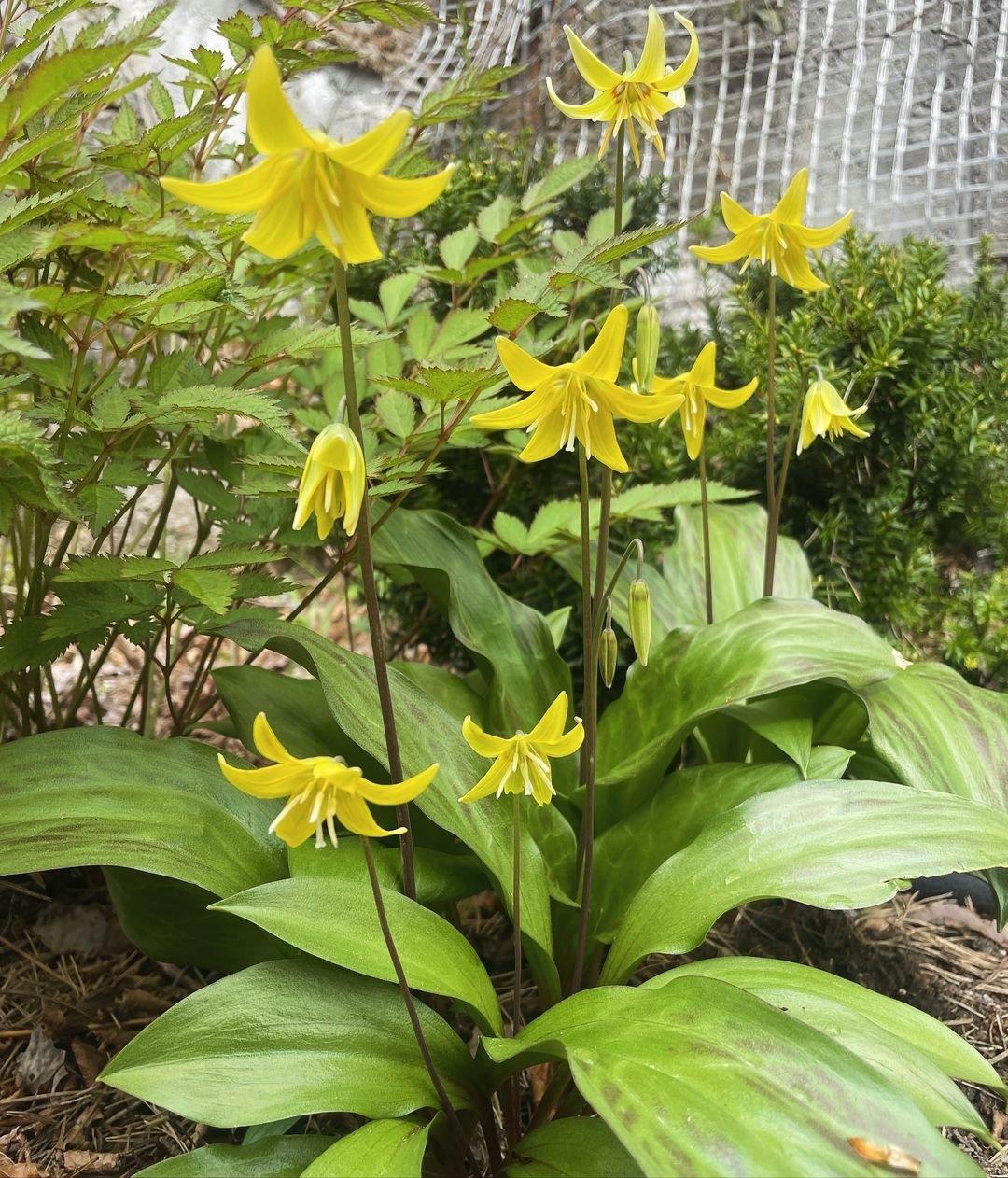
Here’s a chart with information about the Erythronium (Trout Lily) flower:
| Aspect | Details |
|---|---|
| Botanical Name | Erythronium spp. |
| Common Name | Trout Lily |
| Plant Type | Perennial |
| Hardiness Zone | Zones 3-8 |
| Sun Exposure | Partial shade to full shade |
| Soil Type | Moist, well-drained, rich in organic matter |
| Watering Needs | Moderate |
| Growth Habit | Clumping |
| Height/Spread | 6-12 inches tall, 6-12 inches wide |
| Special Features | Nodding, lily-like flowers in yellow, white, or pink; mottled leaves resembling trout skin; early spring bloomer; attracts pollinators |
Erythronium or Trout Lily, has nodding flowers and mottled leaves that look a bit like trout skin. They bloom in early spring.
How to grow:
- Plant in partial to full shade
- Use rich, moist soil
- Don’t disturb once planted – they don’t like to be moved
Trout Lilies are great for woodland gardens. They naturalise well in the right conditions.
12. Epimedium
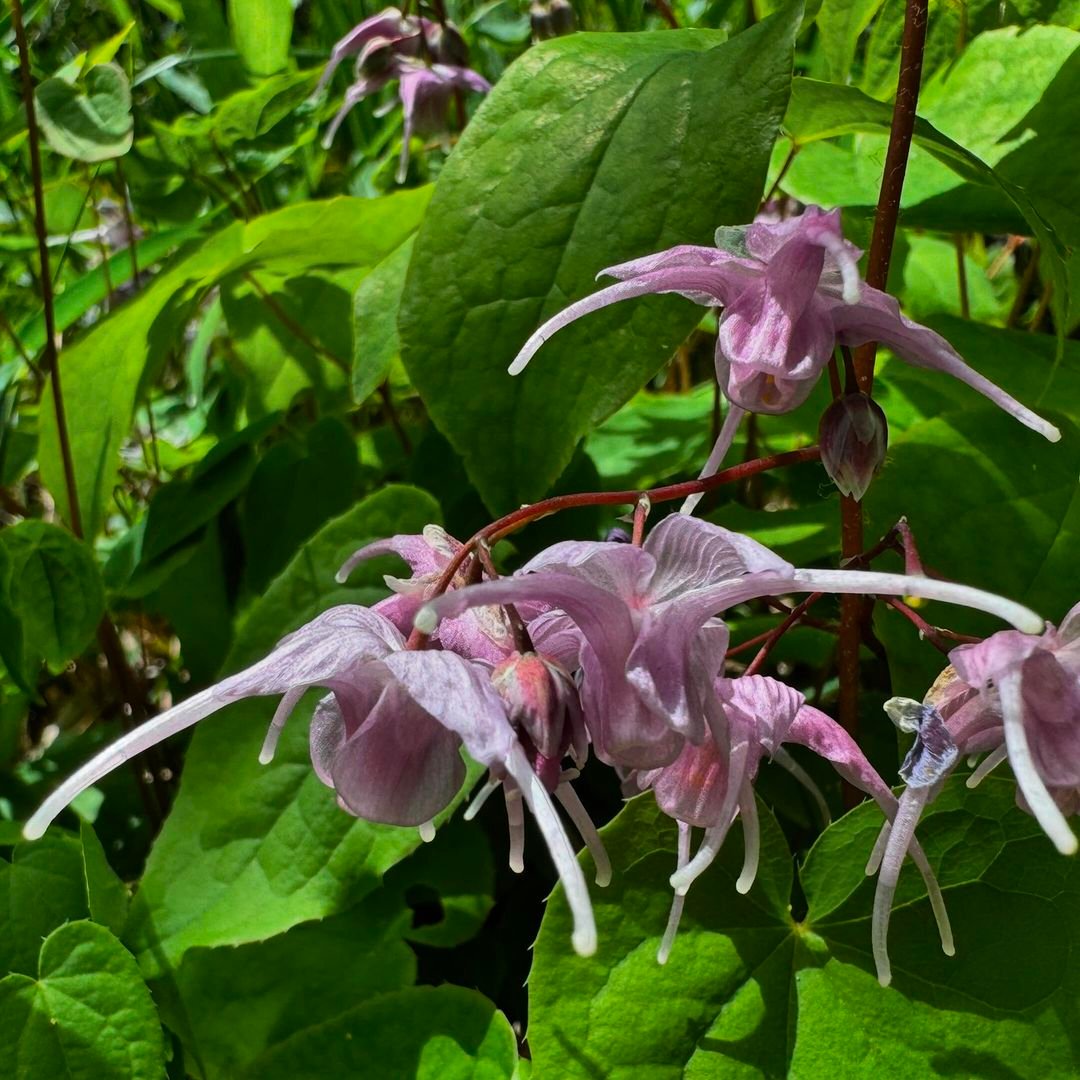
Here’s a chart with information about the Epimedium (Barrenwort) flower:
| Aspect | Details |
|---|---|
| Botanical Name | Epimedium spp. |
| Common Name | Barrenwort |
| Plant Type | Perennial |
| Hardiness Zone | Zones 4-9 |
| Sun Exposure | Partial shade to full shade |
| Soil Type | Well-drained, fertile soil |
| Watering Needs | Moderate |
| Growth Habit | Spreading, clumping |
| Height/Spread | 6 inches to 2 feet tall, 1-2 feet wide |
| Special Features | Delicate, spurred flowers in shades of pink, yellow, white, or purple; heart-shaped leaves; deer-resistant; drought-tolerant once established |
Epimedium, also known as Barrenwort, has small, delicate flowers and heart-shaped leaves. It’s a great ground cover for shady areas.
How to grow:
- Plant in partial to full shade
- Use well-draining soil
- Water regularly until established
Epimedium is drought-tolerant once established. It’s also deer-resistant, making it good for woodland gardens.
13. Eucalyptus
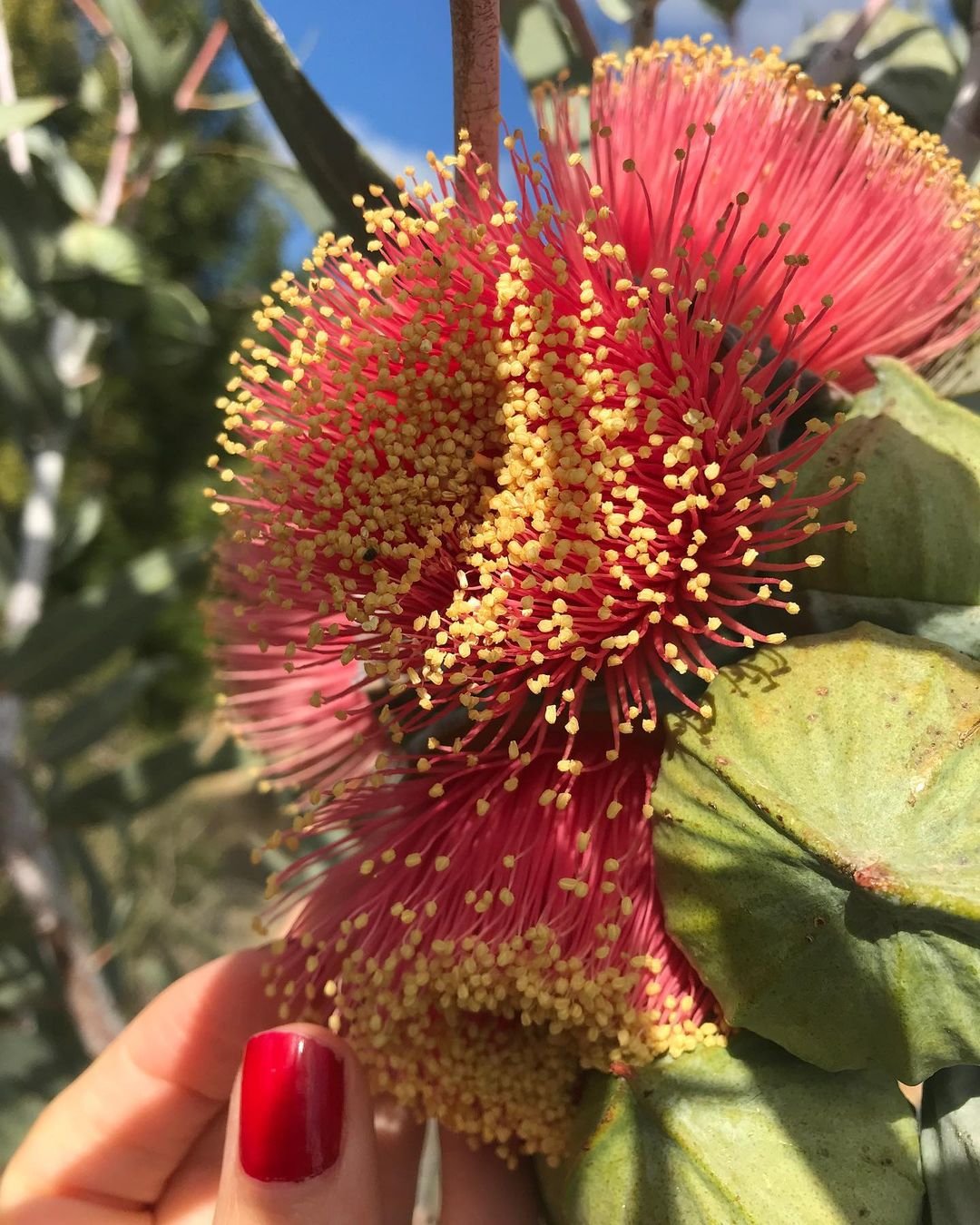
Here’s a summary chart with details about the Eucalyptus flower:
| Aspect | Details |
|---|---|
| Botanical Name | Eucalyptus spp. |
| Common Name | Eucalyptus |
| Plant Type | Tree or shrub (depending on species) |
| Hardiness Zone | Zones 8-11 (varies by species) |
| Sun Exposure | Full sun |
| Soil Type | Well-drained soil |
| Watering Needs | Low to moderate |
| Growth Habit | Tall, upright |
| Height/Spread | Varies widely depending on species |
| Special Features | Aromatic foliage, small white, cream, or yellow flowers with fluffy stamens; attracts bees and other pollinators; important for essential oil production |
While Eucalyptus is grown more for its fragrant leaves than its flowers, some types do produce interesting blooms. The flowers look like fluffy pom-poms.
How to grow:
- Plant in full sun
- Use well-draining soil
- Don’t overwater – they’re drought-tolerant
Eucalyptus leaves are often used in floral arrangements. Some types can be grown as houseplants. Learn more from North Carolina State Extension.
14. Echinops
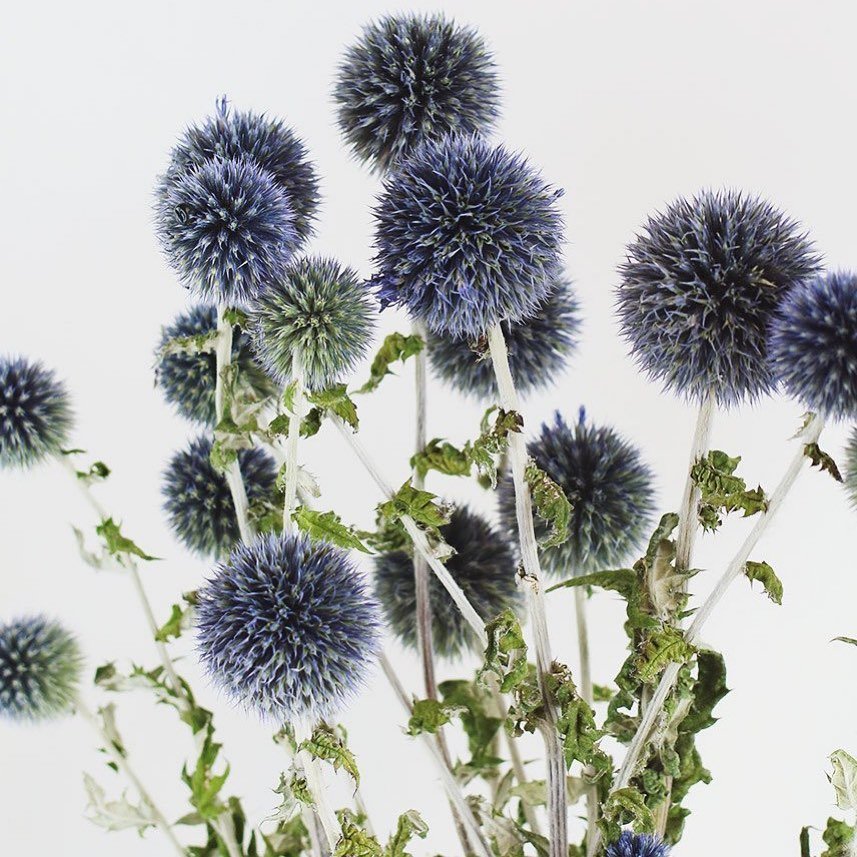
Here’s a chart with information about the Echinops (Globe Thistle) flower:
| Aspect | Details |
|---|---|
| Botanical Name | Echinops spp. |
| Common Name | Globe Thistle |
| Plant Type | Perennial |
| Hardiness Zone | Zones 3-9 |
| Sun Exposure | Full sun |
| Soil Type | Well-drained, sandy or loamy soil |
| Watering Needs | Low to moderate |
| Growth Habit | Upright, clumping |
| Height/Spread | 2-5 feet tall, 1-3 feet wide |
| Special Features | Globe-shaped, spiky blue or white flowers, attractive to pollinators like bees and butterflies, drought-tolerant, excellent for cutting and drying |
Echinops or Globe Thistle, has round, spiky flower heads in shades of blue or white. They add interesting texture to gardens.
How to grow:
- Plant in full sun
- Use well-draining soil
- Don’t overwater – they’re drought-tolerant
Globe Thistles are great for attracting bees and butterflies. They also make good dried flowers.
15. Erysimum

Here’s a chart with information about the Erysimum (Wallflower) flower:
| Aspect | Details |
|---|---|
| Botanical Name | Erysimum spp. |
| Common Name | Wallflower |
| Plant Type | Perennial or biennial |
| Hardiness Zone | Zones 5-9 |
| Sun Exposure | Full sun to partial shade |
| Soil Type | Well-drained, fertile soil |
| Watering Needs | Moderate |
| Growth Habit | Upright, bushy |
| Height/Spread | 6 inches to 3 feet tall, 6-12 inches wide |
| Special Features | Fragrant flowers in shades of yellow, orange, red, or purple; blooms in spring to summer; attracts pollinators; used in borders, containers, and rock gardens |
Erysimum, also called Wallflower, has clusters of small, fragrant flowers. They come in shades of yellow, orange, red and purple.
How to grow:
- Plant in full sun
- Use well-draining soil
- Deadhead to encourage more blooms
Wallflowers are great for rock gardens or the front of borders. They have a sweet scent that attracts butterflies.
16. Emilia

Here’s a chart with information about the Emilia flower:
| Aspect | Details |
|---|---|
| Botanical Name | Emilia spp. |
| Common Name | Tassel Flower |
| Plant Type | Annual |
| Hardiness Zone | Zones 2-11 (grown as annual) |
| Sun Exposure | Full sun |
| Soil Type | Well-drained, fertile soil |
| Watering Needs | Moderate |
| Growth Habit | Upright, bushy |
| Height/Spread | 6-24 inches tall |
| Special Features | Small, button-like flowers in bright shades of red, orange, or yellow; blooms from summer to fall; attracts pollinators like bees and butterflies; suitable for borders, containers, and wildflower gardens |
Emilia or Tassel Flower, has small, fluffy flower heads that look like tassels. They’re usually bright orange or red.
How to grow:
- Plant in full sun or partial shade
- Use well-draining soil
- Water regularly but don’t overwater
Tassel Flowers are easy to grow from seed. They’re great for adding pops of bright color to gardens.
17. Escallonia

Here’s a chart with information about the Escallonia flower:
| Aspect | Details |
|---|---|
| Botanical Name | Escallonia spp. |
| Common Name | Escallonia |
| Plant Type | Evergreen shrub |
| Hardiness Zone | Zones 7-10 |
| Sun Exposure | Full sun to partial shade |
| Soil Type | Well-drained, fertile soil |
| Watering Needs | Moderate |
| Growth Habit | Upright, bushy |
| Height/Spread | 3-10 feet tall, 3-6 feet wide |
| Special Features | Clusters of small, bell-shaped flowers in shades of pink, white, or red; glossy green foliage; attracts pollinators; drought-tolerant once established |
Escallonia is a shrub with small, tubular flowers and glossy leaves. The flowers are usually pink or red and attract hummingbirds.
How to grow:
- Plant in full sun or partial shade
- Use well-draining soil
- Prune after flowering to keep shape
Escallonia is often used for hedges in mild climates. It’s evergreen and provides year-round interest.
18. Eremurus
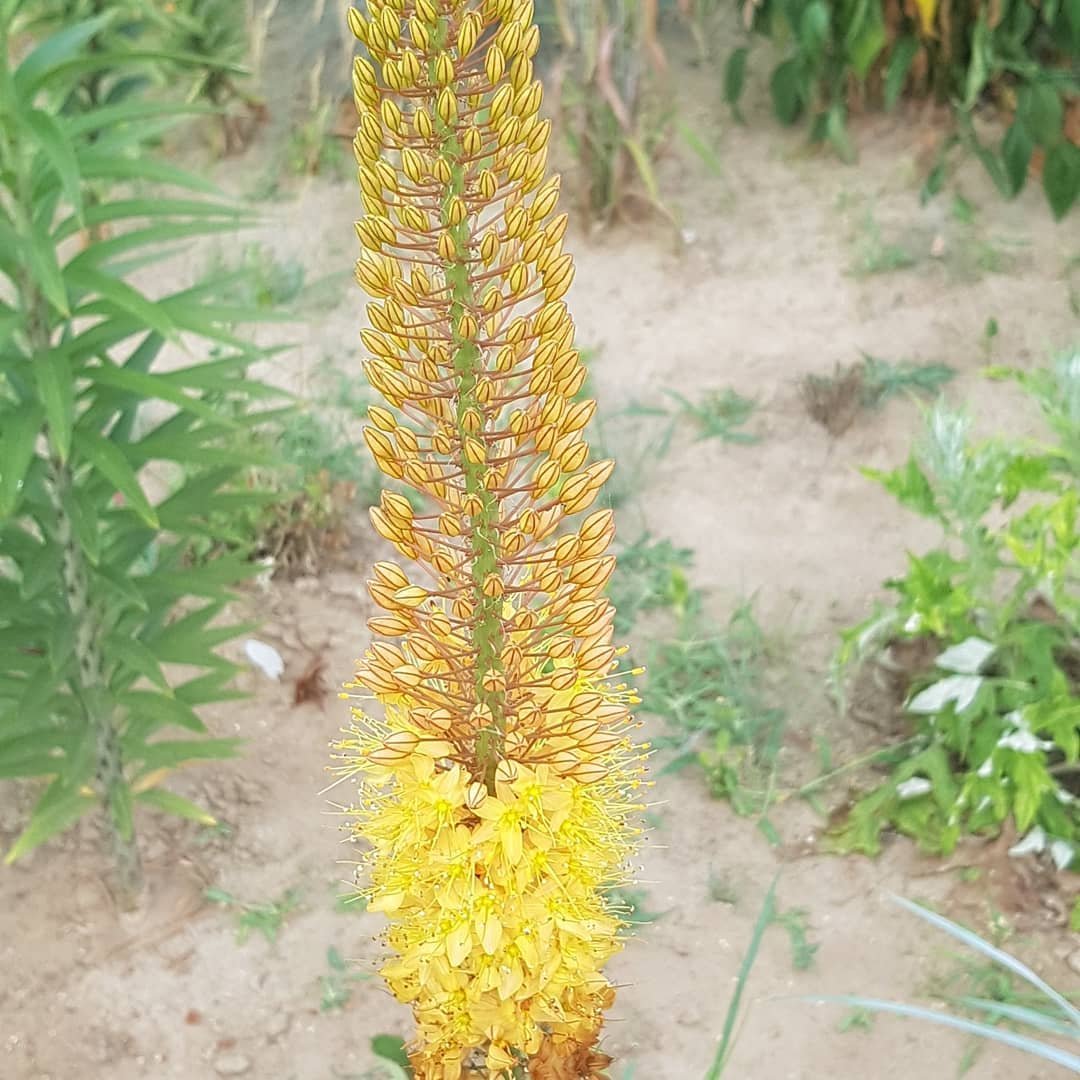
Here’s a chart with information about the Eremurus (Foxtail Lily) flower:
| Aspect | Details |
|---|---|
| Botanical Name | Eremurus spp. |
| Common Name | Foxtail Lily |
| Plant Type | Perennial bulb |
| Hardiness Zone | Zones 5-9 |
| Sun Exposure | Full sun |
| Soil Type | Well-drained, sandy soil |
| Watering Needs | Low to moderate |
| Growth Habit | Tall, spiky |
| Height/Spread | 3-8 feet tall, 1-2 feet wide |
| Special Features | Spectacular tall flower spikes with numerous small flowers in shades of white, yellow, pink, or orange; blooms in late spring to early summer; requires well-drained soil and protection from excessive moisture in winter |
Eremurus, also called Foxtail Lily, has tall spikes of small, star-shaped flowers. They can grow up to 10 feet tall!
How to grow:
- Plant in full sun
- Use well-draining soil
- Don’t disturb once planted – they have fragile roots
Foxtail Lilies are great for adding height to the back of borders. They make dramatic cut flowers.
19. Exacum

Here’s a chart with information about the Exacum flower:
| Aspect | Details |
|---|---|
| Botanical Name | Exacum spp. |
| Common Name | Persian Violet, Exacum |
| Plant Type | Perennial or annual |
| Hardiness Zone | Zones 10-11 (often grown as indoor plants elsewhere) |
| Sun Exposure | Bright indirect light to partial shade |
| Soil Type | Well-drained, fertile soil |
| Watering Needs | Moderate |
| Growth Habit | Low-growing, bushy |
| Height/Spread | 6-12 inches tall, 6-12 inches wide |
| Special Features | Clusters of small, star-shaped flowers in shades of blue, purple, or white; blooms year-round in suitable conditions; attractive to indoor gardeners; requires high humidity and consistent moisture |
Exacum or Persian Violet, has small, star-shaped flowers in shades of blue or white. It’s often grown as a houseplant.
How to grow:
- Keep in bright, indirect light
- Use well-draining potting mix
- Keep soil consistently moist
Persian Violets are great for adding color indoors. They have a sweet fragrance, especially in the evening.
20. Eschscholzia
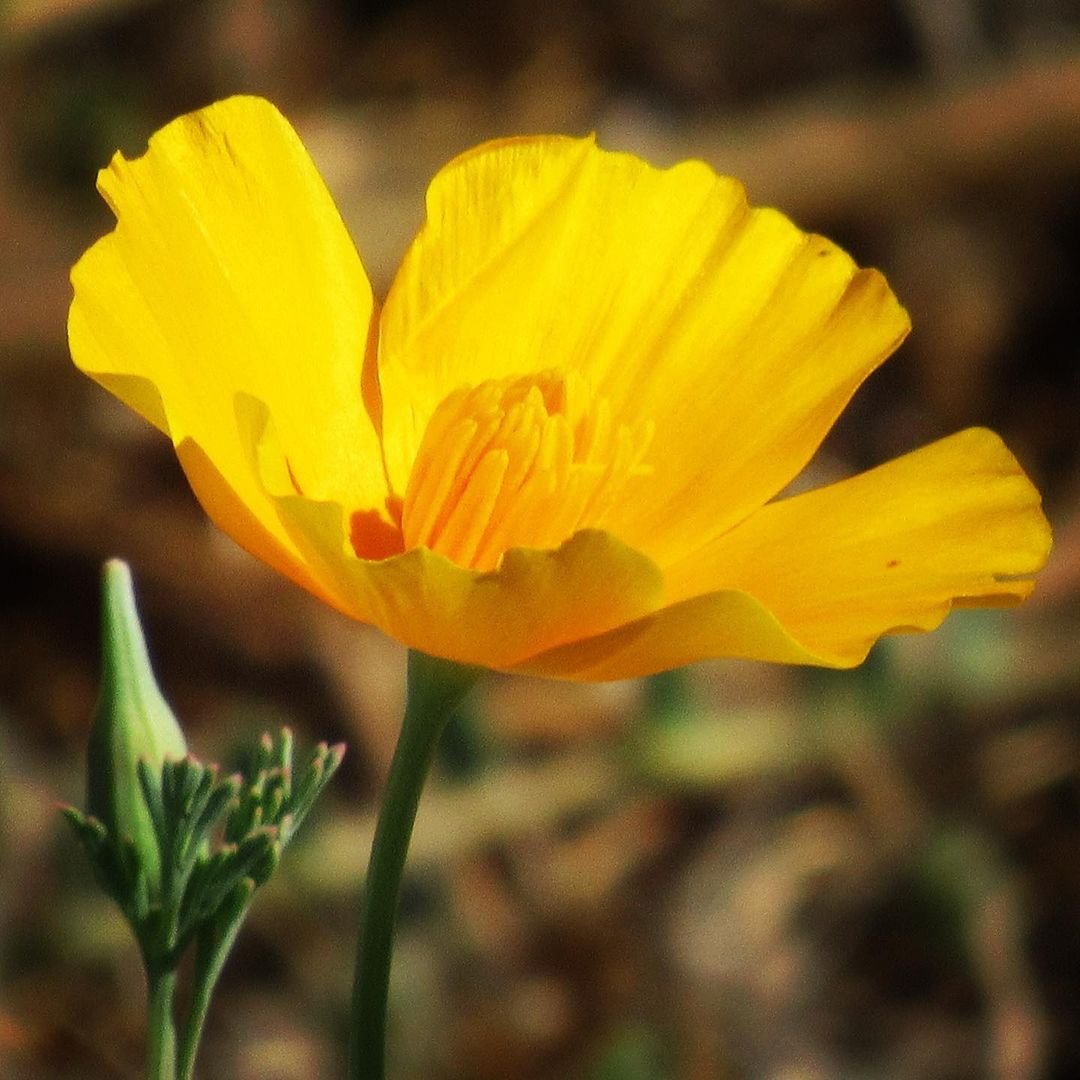
Here’s a chart with information about the Eschscholzia (California Poppy) flower:
| Aspect | Details |
|---|---|
| Botanical Name | Eschscholzia californica |
| Common Name | California Poppy |
| Plant Type | Annual |
| Hardiness Zone | Zones 6-11 |
| Sun Exposure | Full sun |
| Soil Type | Well-drained, sandy or loamy soil |
| Watering Needs | Low |
| Growth Habit | Upright, bushy |
| Height/Spread | 12-18 inches tall, 6-12 inches wide |
| Special Features | Bright orange, yellow, or red flowers; fern-like foliage; drought-tolerant; self-seeding; attracts pollinators; blooms from spring to summer |
Eschscholzia, or California Poppy, has silky flowers in shades of orange, yellow and red. These flowers close at night and on cloudy days.
How to grow:
- Plant in full sun
- Use poor, well-draining soil
- Don’t overwater – they’re drought-tolerant
California Poppies are the state flower of California. They’re great for wildflower gardens and attract bees. Learn more from University of California Agriculture and Natural Resources.
Wrapping Up
There you have it – 20 enchanting flowers that start with E! From the tough Echinacea to the delicate Exacum, these plants offer a wide range of colors, sizes, and growing needs. Whether you have a sunny garden, a shady spot or just a few pots indoors, there’s an ‘E’ flower for you.
Remember, gardening is about experimenting and learning. Don’t be afraid to try new plants. You might discover a new favourite! Happy gardening and enjoy your beautiful ‘E’ flowers!

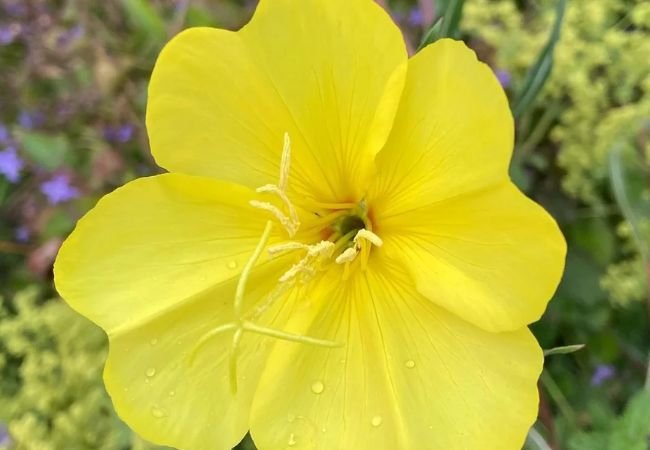





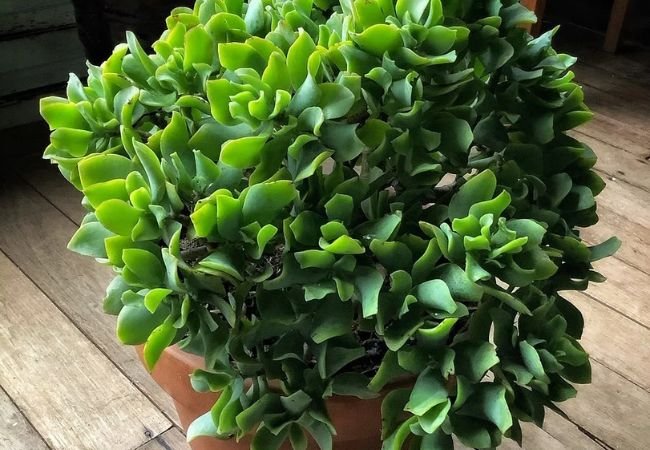
Leave a Reply